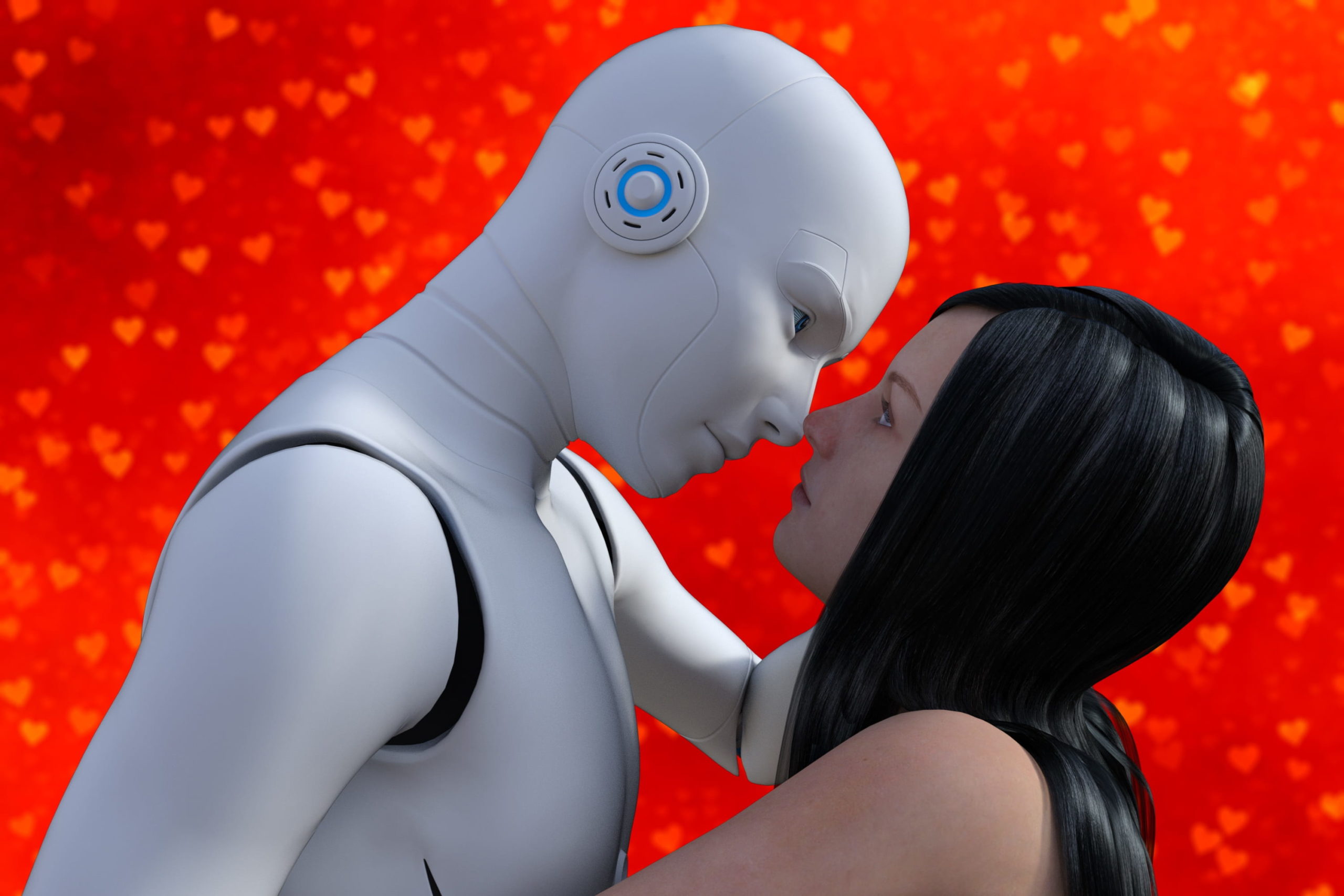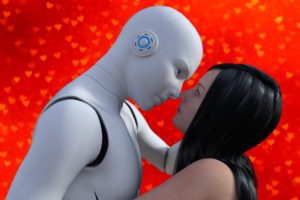
The 1973 movie, Westworld features a theme park with simulated people (humanoid robots). Ordinary folks like us could let themselves go, and safely engage in otherwise undesirable or unsafe fantasies with these ‘people’ – such as fighting, shooting and more. When technical malfunctions begin affecting them, the amusement park transforms into a world of robots acting on their own whims. Futuristic?
Not really. Our human world is another theme park. Aren’t we just robotic beings acting on our own whims, our desires, our egos?
I hear your protests – this analogy is far-fetched! These robots are not the thinking, feeling machines that we humans are. I concede, at least not yet. Nevertheless don’t we share some fundamental similarities?
![]()
To your point, this robot in the picture can hardly be compared to a human skeleton! The robots’ shape follows their function – shuffle loads, sort mail, vacuum floors, walk our dogs, offer companionship, or be the ‘people’ of theme parks. They are not always similar to humans, even superficially!
However, the more complex the function they serve the closer they must be to us – ‘arms’ to manipulate objects, ‘legs’ to move around, ‘eyes’ to ‘see’ around obstacles, ‘ears’ for our voice commands and even touch-sensitivity for touch commands. They must all have a ‘brain’ (hardware and software) to control these senses and their actions. Even so, these brains can’t learn & perform functions they have not been programmed for. Most certainly they don’t understand feelings.
But as artificial intelligence opens up these possibilities, such machines could conceivably grow into ‘humanoid robots’ – robots with human-like abilities to sense, act, learn, and yes, even ‘feel’ like those of Westworld.
So what is the point? Humans are not unlike robots, even if different in lots of ways. There is one deeper similarity that generally escapes our attention, and is worth dwelling on.
Without electricity, the robots are just powerless machines. Their internal systems need it to perform the intended functions. Which electricity do we speak of here – that which permeates the air around us as electrons, protons, ions? No that does not drive robots; it must be ‘harnessed’. This ‘organized’ energy is the ‘life-blood’ for working robots. It simply flows through the components. In the process it enables them to perform their function. That energy just flows, but it does not perform any actions itself. It is there; it just is. Fundamentally, the robots owe their living, active existence and capabilities to this energy.
Of course, today’s robots do not understand this! But will they never? They might very well do.

Pause to wonder the capabilities the cognitive robots of the future. A recent article published by ScienceNews.org conjectures this possibility: “A robot with a sense of touch may one day “feel” pain, both its own physical pain and empathy for the pain of its human companions. Such touchy-feely robots are still far off, but advances in robotic touch-sensing are bringing that possibility closer to reality.“ A projection further into the future allows us to imagine a day when robots could have a mind of their own, an ego of sorts – not dissimilar to humans! And this brings us full circle to the question – how, then, would these ‘humanoid robots’ be different from ‘robotic humans’?
Humans are a fully functional, complex machine. Our body is equipped with organs to navigate & manipulate, with five senses to interact with the outside world, and with a brain for intelligence. But, to parallel a robot, what ‘electricity’ activates our hardware and firmware and bring it alive as a thinking, feeling being? What ‘organized’ electricity powers the human machine and gives it life, it’s powers of thought and action?

Our living bodies are powered by a ‘harnessed’ conscious energy that otherwise pervades the universe, the fundamental entity on which existence rests! Without it, the body is simply an assembly of organs – lifeless and useless – quite similar to the assembly of components that a robot is without electricity. That ‘organized’ conscious energy is what enables the ‘robotic’ humans to feel, think and act as it ‘flows’ through them. That is what gives life to the purely biological, chemical and physical processes of the robotic human machine. Life is not born out of these processes; the processes are born out of life. While our bodies are the robotic vehicles that feel, think and act, we owe our thoughts and actions to that consciousness in which they are inspired, and which enables the body and mind to act.
We are robots in the theme park of this world. We are unaware of our life-blood, our ‘electric’ conscious energy being the inspirer of all our thoughts, deeds, and in turn, the results. Our ego – that association of self with the body-mind-intellect – acts to blind us to the real us – the conscious energy, the soul, that powers our machines.

Rajan -Manjula says:
Brain teasing…robotics and human’s fuctionalities ‘analysis.
Mukul Saran says:
आपने समय निकाल कर पढ़ा, बहुत धन्यवाद, चाचा जी|